Are your climbing shoes too small? Foot and toe injuries explained
Many different foot and toe injuries are associated with rock climbing
- Pressure marks
- Subungual hematomas (blood that is trapped under the nail)
- Splinter hemorrhages (tiny streaks of blood underneath your nail plate)
- Cuts and bruises to the toes
- Dystrophic and infect nails (deformed, thickened or discolored)
- Haglund deformities (bony enlargement on the back of the heel)
- Dorsal calluses (calluses on the top of the toes)
- Hallux valgus (inward facing big toe)
- Claw toe (clawing of the toes)
These are all just a few of the many types of foot and toe injuries that climbers may encounter. The primary mechanism of almost all of these injuries is shoe fit. Many climbers, particularly those with higher ability, climb with shoes that are smaller than their feet.
The Research
In the long term, using tight climbing shoes and shoes that adhere closely to the toes can lead to the development of various forms of these deformities. If we take a look at the image below, we can see several different deformities of the foot and ankle as well as the toes.
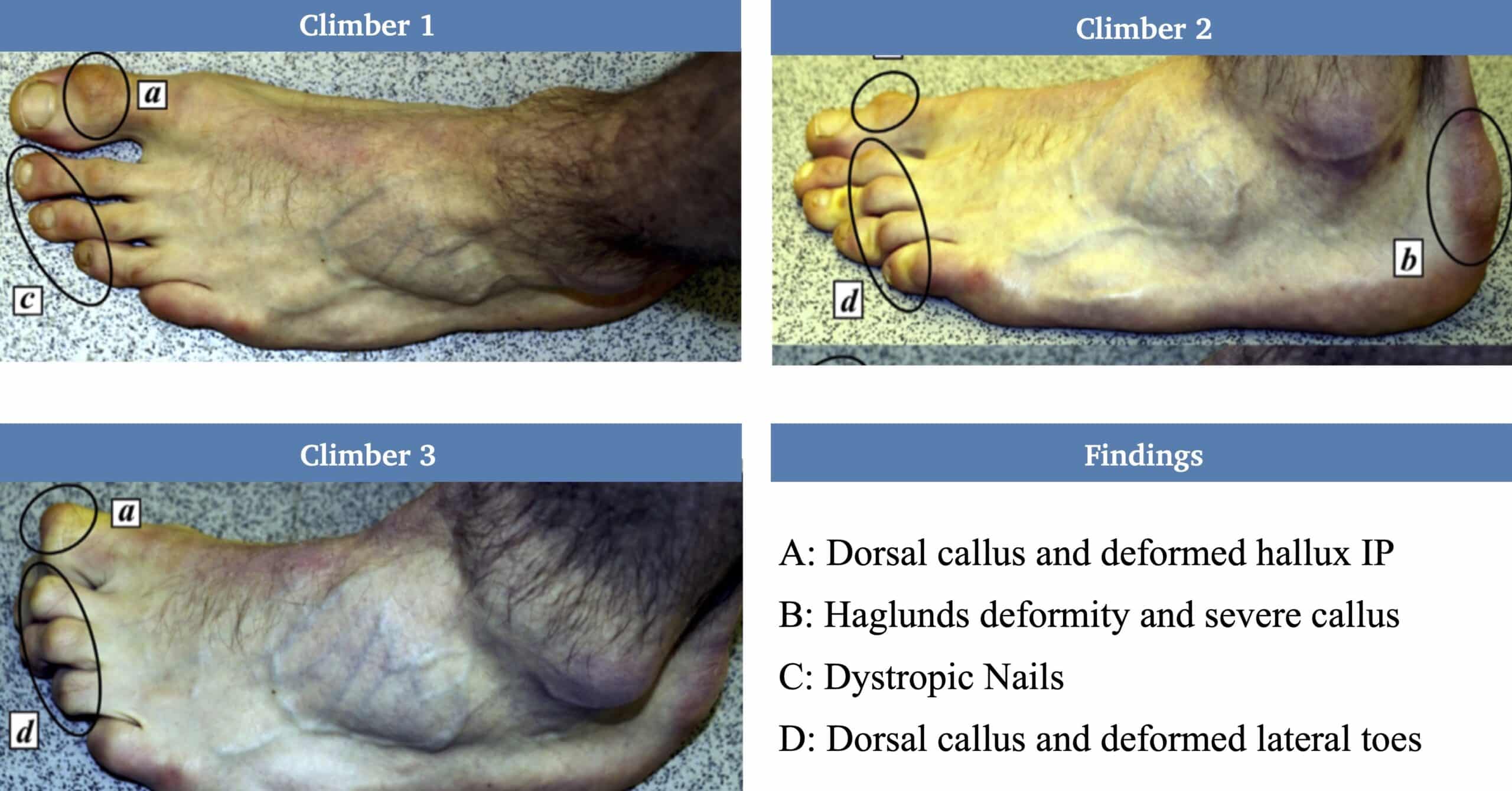
- Climber 1: Dorsal callus over the great toe, a deformed hallux IP joint, and a hallux valgus position. Additionally, we see dystrophic nails.
- Climber 2: we see a dorsal callus over the great toe and dorsal calluses over the second to fifth digit, deformed lateral toes, and a Haglunds deformity with severe callusing.
- Climber 3: Over the great toe, we see a dorsal callus as well as a deformed hallux IP joint and dorsal callus and deformed lateral toes in the second through fourth digits.
These images were adapted from a study by McHenry and colleagues that looked in depth at the different foot, ankle, and toe deformities in rock climbers.
Let’s take a look at another study. This was a study by Schoffl and colleagues. They had a climber stand in an X-ray machine, and they X-rayed their foot without a climbing shoe. They took an X-ray of several views of the foot with the climbing shoe on. How cool is that! Take a look at the findings below.
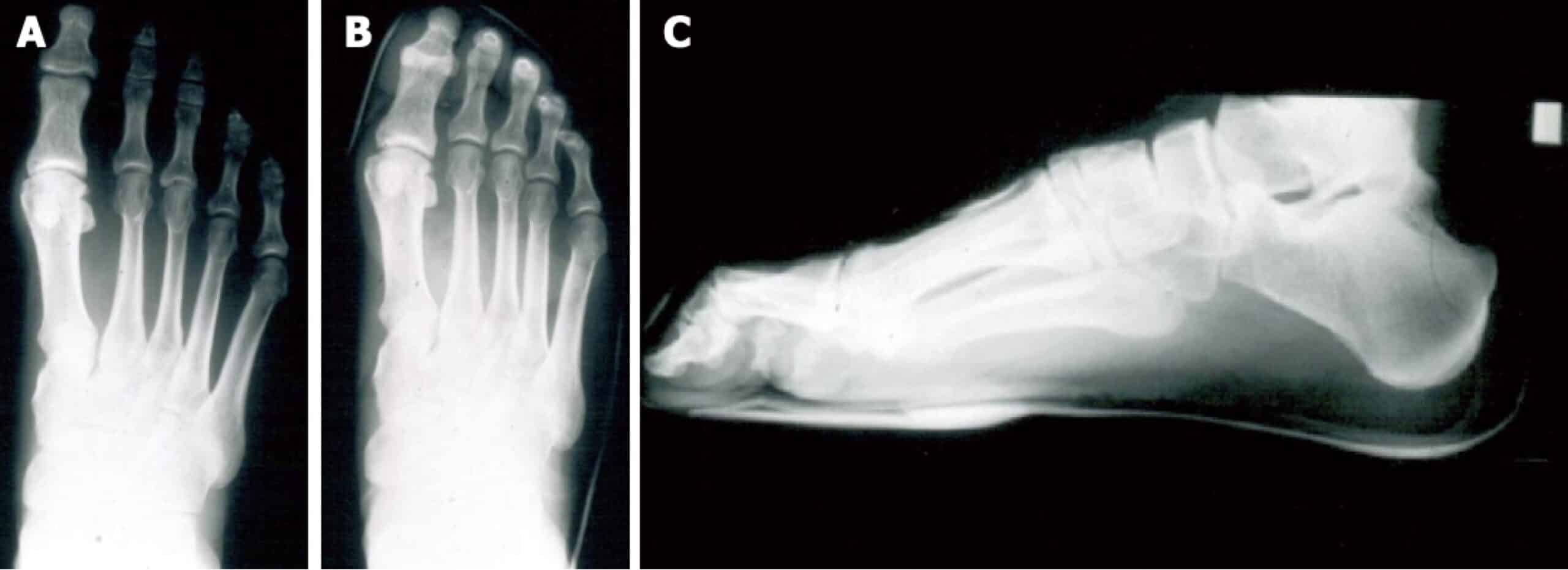
- A: The climber’s barefoot while standing
- B: The same climber in a climbing shoe. Clawed toes and hallux valgus
- C: The same climber in a climbing shoe. Supinated (high arch) foot with clawed toes
The clawed toes, hallux valgus, and supinated foot are common with rock climbers, especially climbers that are wearing tight-fitting shoes. Schoffl and colleagues in this study took it one step further and were able to calculate the degrees of hallux valgus (big toe deformity inward). They showed that:
The hallux valgus angle increases 14 degrees when barefoot to 21 degrees when placed in a climbing shoe.
In 53% of the long-time high-level climbers that were used in this study had a hallux valgus, and 20% of them had it bilaterally from both sides. So, if we want to compare these statistics, 53% of the climbers in this study had a hallux valgus only 4.5% of the general population has it.
When a climber is in a climbing shoe, their hallux valgus may increase up to 7 degrees.
So, it’s important to know that hallux valgus is more likely to occur in higher-level rock climbers and also higher-level climbers wearing small shoes. We need to be aware of our foot care and our shoe selection as rock climbers to be able to prevent or mitigate some of these types of injuries and deformities of the foot.
It’s popular culture and normally okay for feet to hurt when we climb. However, there’s a fine line between having a shoe that’s too small and irritating to the foot, leading to long-term damage. It’s important to have a shoe that’s a perfect fit, just enough to allow us to climb effectively and efficiently.
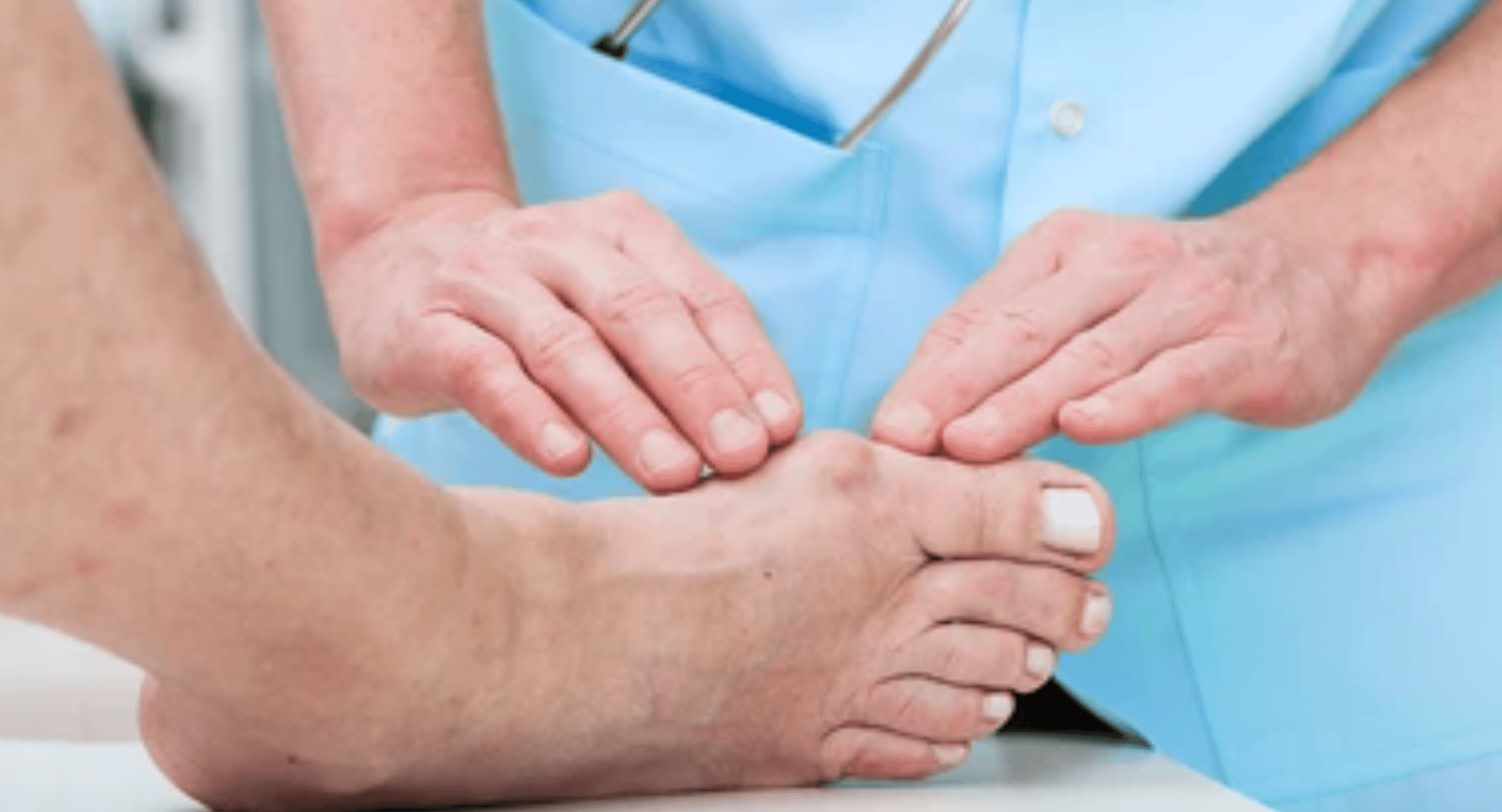
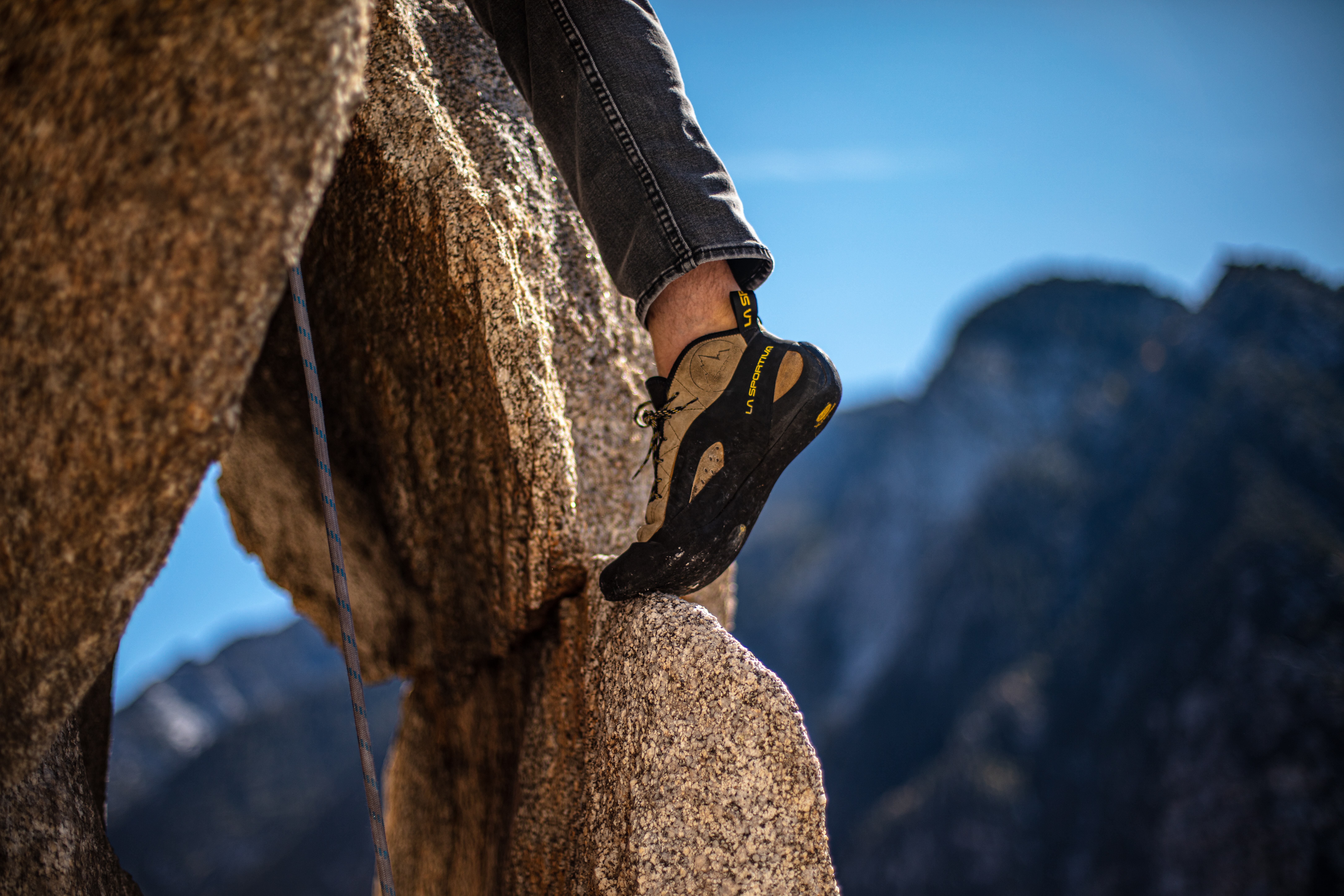
Additional Research
In this study by Killian and colleagues, they noted
The majority of climbing foot injuries resulted from wearing climbing shoes that were unnaturally shaped or were too small.
The shoe size reduction forces the foot to conform to the shoe and changes the biomechanical position of the foot within the shoe. The foot shortens through supination and contraction of the digits. This was a further confirmation of the Schoffl study, understanding that small tight-fitting climbing shoes cause supination of the foot as well as the contraction of the digits.
What else does research tell us? Schoffl and colleagues identified that
High-ability climbers experienced more foot deformities and injuries than climbers of lower ability.
They likened this to the common practice of wearing climbing shoes that were a size smaller than normal street shoes.
So, we get it; we understand that small tight-fitting climbing shoes generate pain and can cause some deformity in the toes; but how small is too small? What do we know about that research? In another study by Schoffl colleagues, they identified
The higher ability climbers had an average shoe size difference between normal shoes and climbing shoes of 2.3 EU or 1.7 US, and the average climbers had a difference of about 1.2 EU or 1.5 US.
These sizes were based on the manufacturer’s sizing of the shoes.
Now there’s another study that was interesting that looked into shoe fit with rock climbers. This was a cross-sectional study by McHenry and colleagues that looked at 56 climbers with a mean of 10 years of climbing experience, and they surveyed them for their activity and footwear. This study shows that
- Ill-fitting and excessively tight footwear was found in 55 out of the 56 climbers.
- Foot pain during normal activity was commonplace in 91% of the climbers
One other interesting finding in the study was that
Climbers had a mean size reduction of almost four US shoe sizes between the climber’s street shoes and climbing footwear.
Now how they determined these numbers is a little different from other studies, but we need to understand how they measured this difference. They actually measured the footwear using a calibrated foot shoe ruler rather than relying on the manufacturer’s sizing.
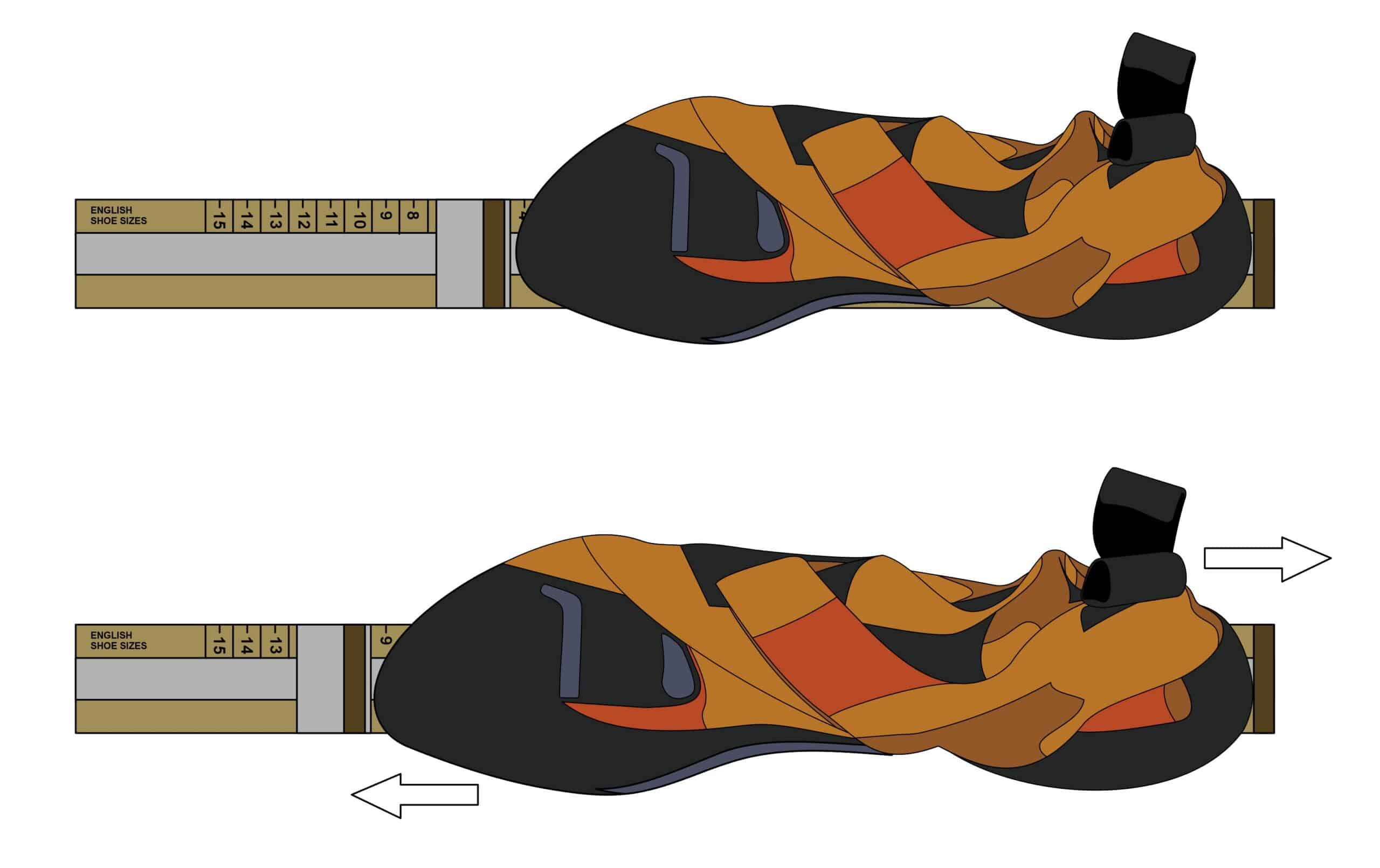
In the study they found an association of climbers who had higher abilities had tighter fitting shoes. And determined that
Climbing performance needs to be balanced with foot health.
It’s important to understand that a tight-fitting climbing shoe can aid in performance and can also lead to some foot and toe deformities; it’s a perfect balance of finding the right size fit.
References
- McHenry, R. D., Arnold, G. P., Wang, W., & Abboud, R. J. (2015). Footwear in rock climbing: Current practice. The Foot, 25(3), 152-158.
- Schöffl V, Winkelmann HP. Footdeformations in sport-climbers. Fußdeformitäten bei Sportkletterern. 1. D Z Sport- med 1999; 50: 73-76
- Killian RB, Nishimoto GS, Page JC. Foot and ankle injuries related to rock climbing. The role of footwear. J Am Podiatr Med Assoc 1998; 88: 365-374 [PMID: 9735622]
- Schöffl V, Winkelmann HP. [Footdeformations in sport-climbers] Fußdeformitäten bei Sportkletterern. 1. D Z Sport- med 1999; 50: 73-76
- Schöffl V, Hochholzer T. Sportklettern. In: Klümper A, ed. Sporttraumatologie. Landsberg/Lech, Germany: EcoMed; 1998:II-52.1, 1-24
- McHenry, R. D., Arnold, G. P., Wang, W., & Abboud, R. J. (2015). Footwear in rock climbing: Current practice. The Foot, 25(3), 152-158.
About The Author

Jared Vagy is a doctor of physical therapy who specializes in treating climbing injuries. He is the author of the Amazon #1 best-seller “Climb Injury-Free,” teaches Climbing Injury Professional Education for Medical Providers, and is the developer of the Rock Rehab Protocols. He has published numerous articles on injury prevention and lectures internationally. Dr. Vagy is on the teaching faculty at the University of Southern California, one of the top doctor of physical therapy programs in the USA. He is a board-certified orthopedic clinical specialist. He is passionate about climbing and enjoys working with climbers of all ability levels, ranging from novice climbers to the top professional climbers in the world.
For more education, check out the Instagram page @theclimbingdoctor
- Disclaimer – The content here is designed for information & education purposes only and the content is not intended for medical advice.


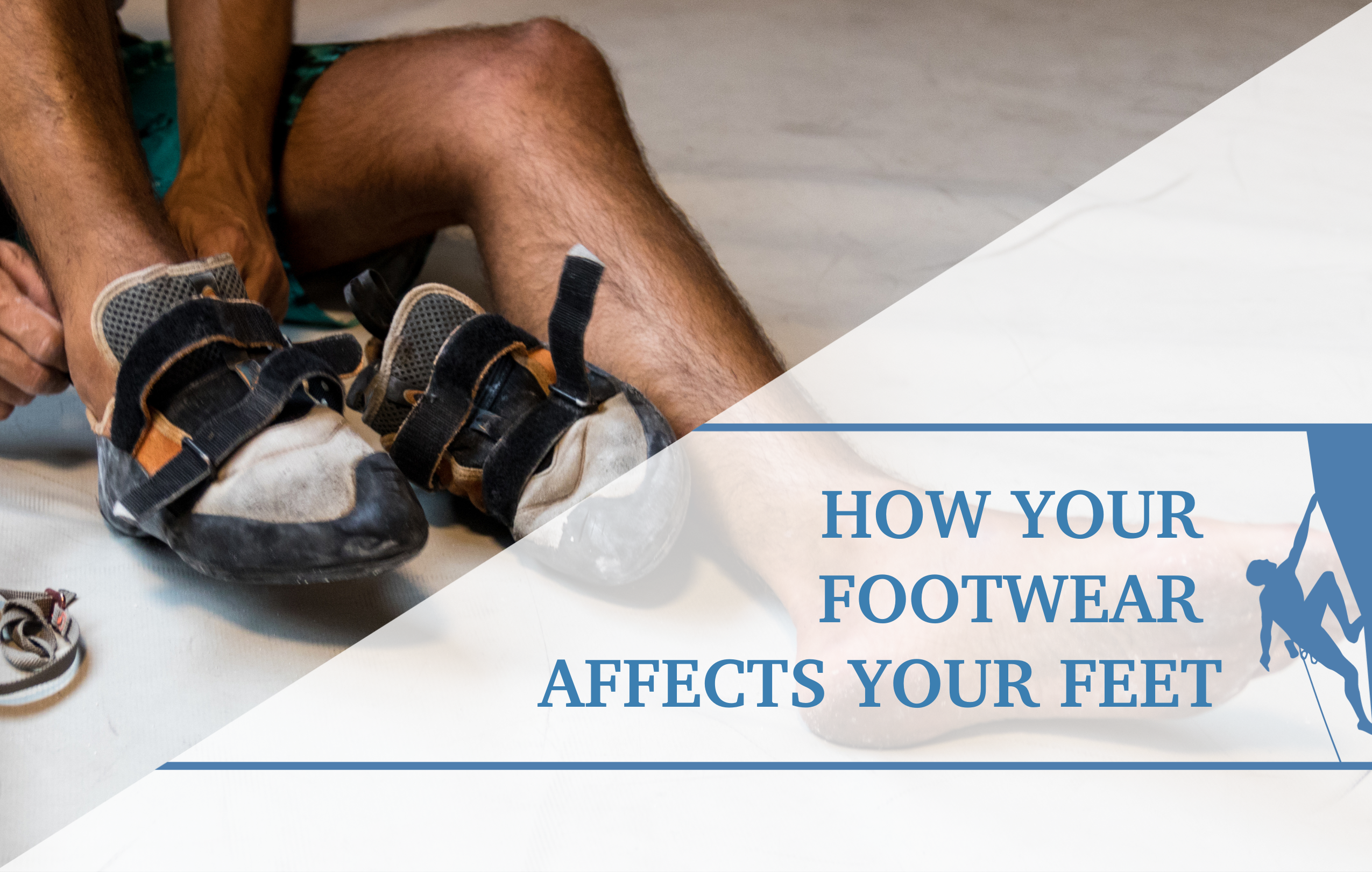
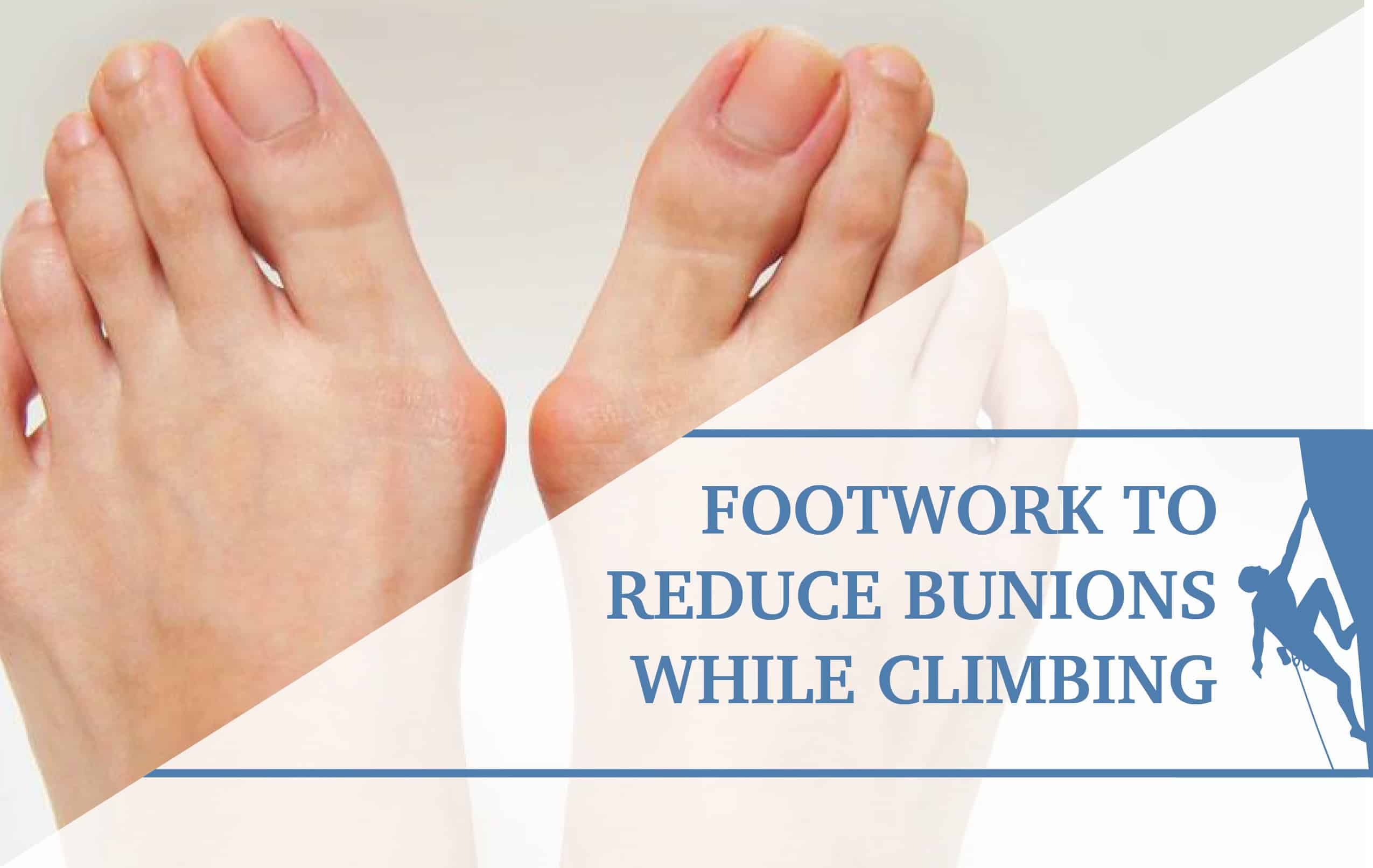
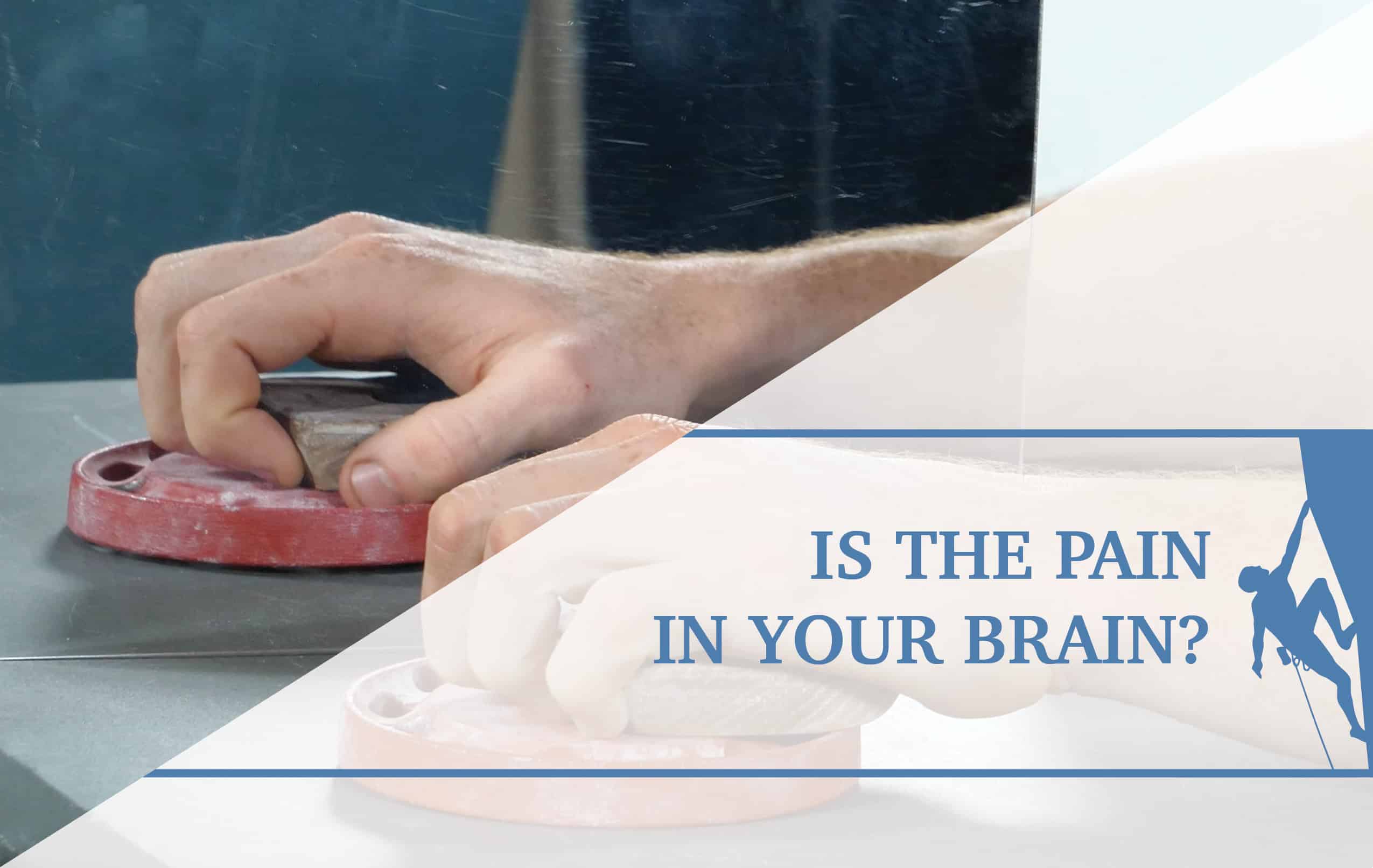
I’ve got a Haglunds deformity that I tried to treat with physical therapy, shockwaves, and exercises for the last year. My heel doesn’t look much different, the bump is quite small and nearly invisible without comparing two feet but it hurts and gets irritated from any pressure on it. I had to switch to more comfortable climbing shoes and used sandpaper to get rid of some rubber on the back of my shoe to make it softer and less painful for me. After all of this, I am still afraid to heel hook with my right leg and regularly feel a big discomfort from any pressure put on the back of my heel. I also can’t do jogging for more than 5k at once, or drive a car in stiff shoes. The doctor recommended platelet plasma injections, but I don’t believe it would help, as it doesn’t get rid of the problem and only could help with soft tissue for some time.
After struggling for last year, trying everything I am close to deciding to have a minimal invasive surgery. I wanted to leave a comment here, maybe there is someone who had a similar experience and could share an opinion, on whether it is worth it and how it is to climb after surgery. What was the recovery time?